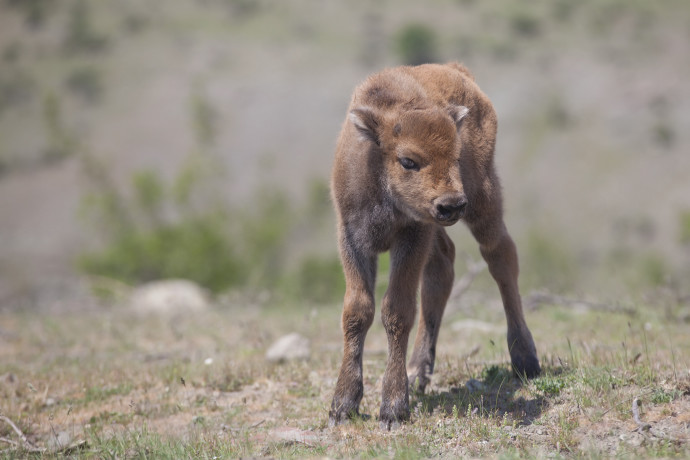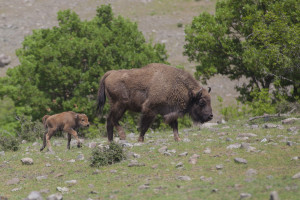The Rewilding Rhodopes team were overjoyed to welcome a new baby bison at the end of April. Both mother and calf are now doing well, with the team monitoring the family on a daily basis.

The bison calf is the second born in the past three years in the area. Back in 2015, the same adult pair were responsible for the birth of the first bison born in the Rhodopes for centuries. Their breeding success, shows that the animals have adapted well to their local environment.
Members of the Rewilding Rhodopes team have been working on the breeding of the European bison for many years. This process started in October 2013, when five bison originating from Germany, were brought to the bison breeding site at Studen Kladenets Reservoir in the Bulgarian Rhodope Mountains core area.
The European bison, a cousin of the North American bison, is the largest wild herbivore in Europe. As a grazer, it contributes to the maintenance of open forest ecosystems, and is an iconic animal for the rewilding process in Europe.

Severe hunting pressure and habitat loss saw the European bison become extinct in the wild in Europe in the early 20th century, although it had already disappeared from Bulgaria centuries earlier. A large reintroduction programme based on captive species saw wild populations eventually restored in Central and Eastern Europe (mainly in Poland and Belarus), while a small herd was also reintroduced in the 1960s to a hunting reserve in northern Bulgaria.
The European bison, together with the Eurasian beaver and white-tailed eagle, is a species that has made a remarkable comeback in Europe over the past 50 years. Its wild population now numbers around 3,000.
The bison in Studen Kladenets have quickly established themselves as a major attraction for locals and tourists in the Rhodope Mountains. They complement a free-ranging population of fallow deer, one of the largest in Europe, and of red deer, reintroduced by the Rewilding Rhodopes team also living in the reserve.
Rewilding Europe and Rewilding Rhodopes are currently working together on enhancing the bison breeding site in Rhodopes with more animals in order to create a more robust and viable breeding group.
